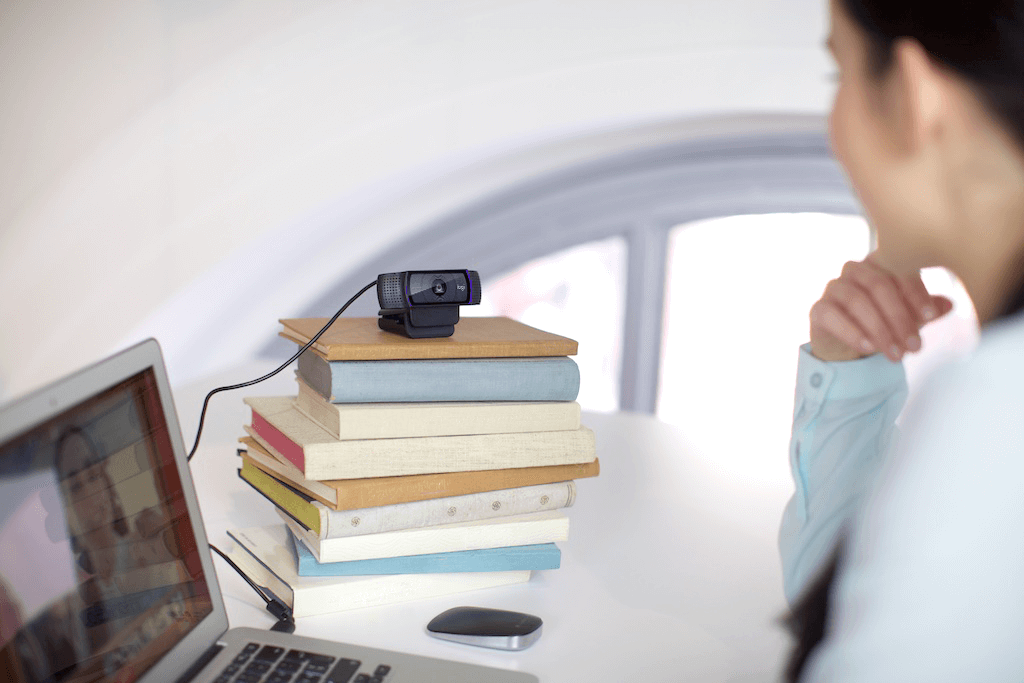Chief Technology Officer
The Future of Work: How Will Working Environments & Culture Change
When work will return to normal When respondents to Logitech’s mini webinar survey were asked ...
LEARN MORE
With the ability to adapt to individual student’s environments and circumstances, video conferencing helps to maximise the learning outcomes for those in the education system. Whether their learning experience is primary or secondary school, or even further learning such as university courses.
By providing a platform for immersive learning, engagement and participation is enhanced. This helps to improve the learning experience for all students. Additionally, video conferencing’s ability to be flexible and adaptable benefits the individual needs of learners.
This results in a more equitable classroom environment. In terms of the more immediate picture, an equitable classroom means that everyone’s learning is encouraged and therefore, confidence grows and outcomes improve.
In the bigger picture, video conferencing helps learning institutions around the world cultivate an equitable classroom. This means that remote, inner city and homeschooled individuals can access the same learning material. All of which provides equal access to an essential life tool- education.
The popularity of video conferencing has risen in recent years. This is largely because video conferencing has been employed by industries around the world to ensure that workers could operate during the pandemic.
However, the many operational benefits that video conferencing can provide has seen this technology earn a more permanent place in workplace settings. While originally seen as a way to connect workers operating remotely, video conferencing can also be used to great effect in school settings.
Facilitating everything from guest speakers and outside programs to enhanced presentations and more accessible parent-teacher conferences. Video conferencing can positively impact virtually every aspect of the learning day.
It’s also important to note that video conferencing can introduce new learning techniques. For example, with the ability to join classes from any location, sick days no longer disrupt learning. Additionally, video conferencing can be used in order to create virtual office hours. Providing students with opportunities for meaningful engagement outside of the classroom.
This ensures that an environment is created where students have access to all the resources needed. Encouraging deeper and barrier free learning, video conferencing can be used by teachers and students alike to maximise learning outcomes.
The importance of learning at all ages cannot be underestimated. In early year learning, the focus is on providing foundational knowledge for individuals to build upon as they grow. In higher education institutions, information is provided to help students start their careers.
The integral nature of learning to all stages of the life cycle means that teaching processes must always be efficient and effective. One such way to enhance the learning experience is by implementing video conferencing technology.
Offering an array of different benefits to both the learning institution and the individual students, video conferencing facilitates deeper education and engagement. Ensuring that students are provided with the tools needed to navigate both everyday and professional life.
One of the main benefits of video conferencing in education is the fact that it promotes increased engagement and participation. Rather than watching a teacher write notes down on the whiteboard, technology can be employed to make learning more engaging.
With the ability to engage the senses, learning becomes an experience rather than a necessary chore. When learners are engaged, there is a direct correlation to increased knowledge retention. This helps to improve educational outcomes for tests and assignments.
There is a certain sense of accessibility when it comes to video conferencing technology. This is because it helps to bridge geographical barriers. This means that students who are sick or travelling can still log in to the class and learn alongside their classmates, albeit remotely.
It also provides a platform for those with distinct learning needs to be a part of the classroom environment as well. This is because video conferencing provides increased educational resources. Meaning that every student has access to the learning methods that are most effective.
Another benefit of video conferencing is the ability for increased collaboration. In the classroom, collaboration is multi-faceted. In one instance, collaboration could refer to working with a teacher to explain concepts or complete classroom activities.
In another instance, collaboration could mean working together with classmates in small groups to present or work on assignments. As collaboration helps to teach and foster teamwork, these opportunities are important to the learning experience.
Video conferencing not only aids collaboration, it makes it more efficient. By providing a platform complete with functions such as live chat and screen sharing, information is more easily conveyed and disseminated, aiding the collaboration process, classroom-wide.
With the ability to connect classrooms with students and teachers from around the world, video conferencing results in a more equitable classroom environment. As such, the benefits are twofold.
On one hand, an equitable classroom experience means that everyone within the classroom feels valued and empowered. Two facets that are needed when it comes to infusing student’s learning with confidence.
On the other hand, this unprecedented access to different learning processes and tools essentially levels the playing field. Put simply, it means that learning experiences are equal. Ensuring that previous barriers such as location, underfunding and under resourcing do not impact the quality of a student’s learning experience.
Teaching a classroom full of students can often be a complex endeavour. Video conferencing changes that. Inherently flexible and convenient, video conferencing technology brings a level of adaptability to the classroom.
The ability to be flexible means that the needs of different teachers, students and even classrooms can be taken into account. This way, learning can be seamless rather than subject to barriers.
For teachers, this level of flexibility and convenience means that lessons can easily be paused in order to answer questions in the classroom. It also means that there is a platform available to conveniently communicate with individual students, should questions arise.
For students, flexibility means greater engagement and increased learning potential. If something is missed in the lessons, video conferencing enables recording. This means that lessons can be revisited later in the day so that students do not miss key concepts.
The ability to record lessons also aids learning. The convenience to go back and view lessons from weeks or months ago can assist in test or assignment preparation. Essentially arming students with all the tools needed to be successful.
Education during any stage of life is pivotal. As such, rather than relying on traditional and in some cases, often outdated teaching techniques, education processes and standards must adapt.
By embracing technology, in particular video conferencing solutions, the learning experience is enhanced. Consequently, learning outcomes are maximised. All of which positively impacts students and teachers alike.
Importantly, video conferencing technology also helps to create a more equitable classroom environment. By providing opportunities- through products like Logitech Sight– for all students to participate and learn together, regardless of location or ability, everyone feels valued and empowered.
With a focus on improving everything from accessibility and engagement to collaboration and teamwork, video conferencing helps to ensure that modern students are provided with all the tools necessary to be successful in their next chapter after learning.

James works with businesses in Victoria and Tasmania to create the perfect Logitech solution so they can communicate anytime, anywhere.
He believes video collaboration enables businesses to communicate effectively, increase productivity and maintain unified team culture.
With 11 years of industry experience, James is committed to partnering with clients to tailor their solutions. He delivers the right hardware within their budget to simplify their way of work and create sustainable change.
James Barker
Enterprise business development manager - VIC | TAS












There’s the perfect solution for every space. Get in touch with our team below for a free, no-obligation discussion and see how we can help today.